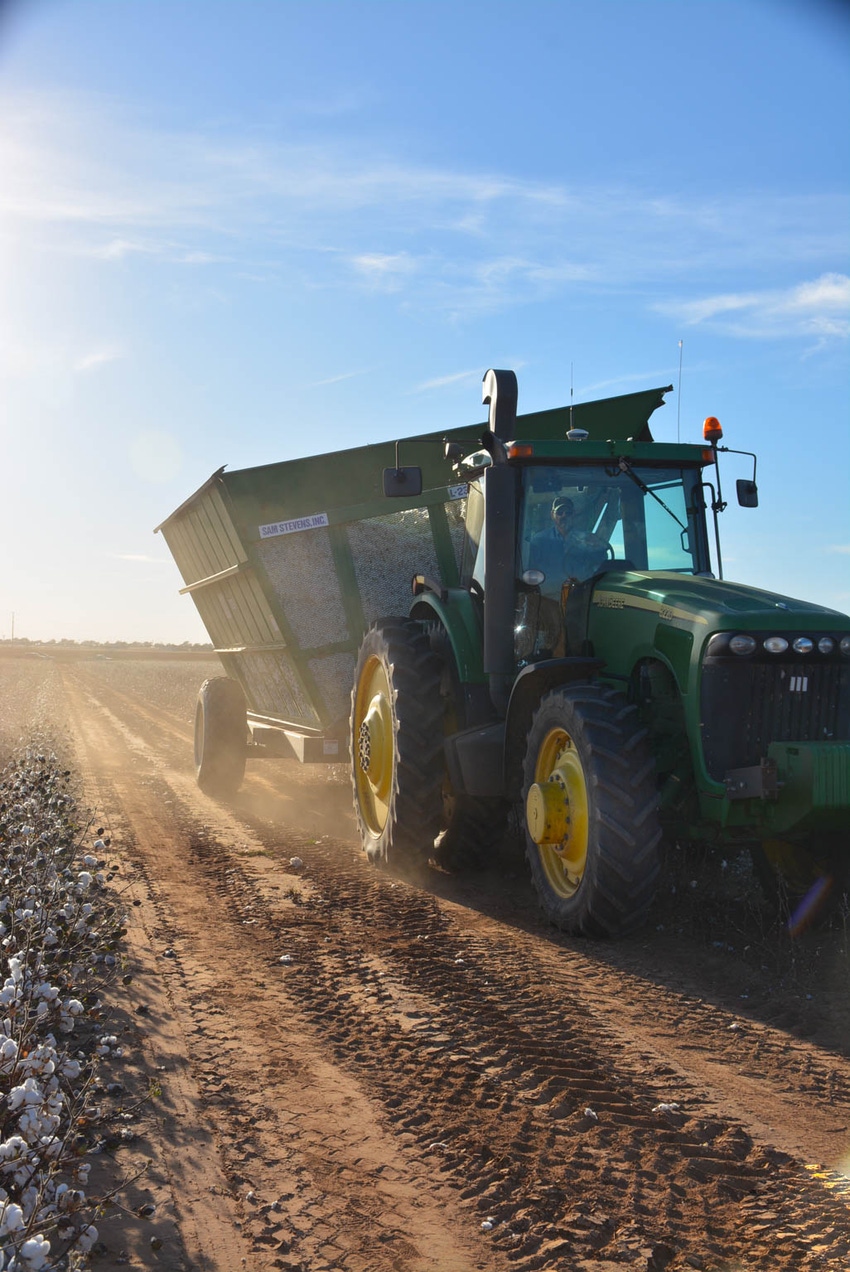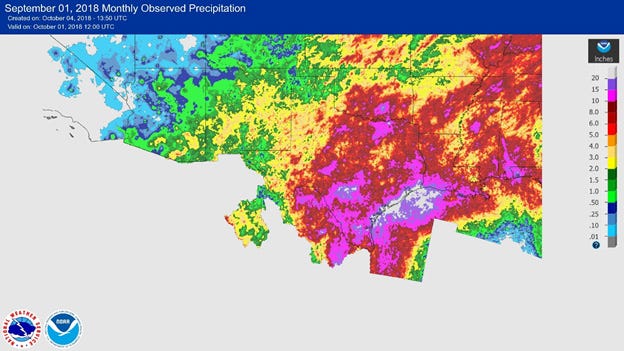October 4, 2018

I know you’re not supposed to ever make that wish in farm or ranch country, but I’ll make it anyway — at least for the next six weeks for the areas with unharvested cotton.
The 2018 growing season has been notable for extremes. In the southern plains region, we had extreme drought until recently. In contrast, the eastern half of the cotton belt saw delayed plantings and slow crop development all summer due to frequent rains. September brought various tropical rain events along the Gulf Coast and Atlantic Seaboard, capped by Hurricane Florence.
Now, the 2018 crop in central and northwestern Texas is beginning to be negatively impacted by a rainy September. Abilene, Texas, for example, had 5.75 inches of rain in September. The average September rainfall for Abilene is 2.91 inches. This is also evident from the cumulative precipitation map here (source National Weather Service). The sources of the moisture include some tropical influences, as well as normal cold fronts. Being in an El Niño watch, the thing to worry about now are cold fronts combined with Pacific moisture.

ECONOMIC EFFECTS OF RAIN
Rain during the cotton harvest season has various economic effects. Harvest aid treatments may have to be repeated, increasing costs. Lint grades may be lower from poor color grades, bark, trash, etc. Cottonseed can also lose value from degradation. Lint yields can be reduced from boll rot or bolls not opening completely. Also, hard rainfall can string out fiber not being harvested. Research over the last 20 years has measured an average of a quarter pound less lint yield associated with small (1 cm/0.39 in) rain events during harvest. And, while the average yield effect may be small, more recent research suggests that the variability of cotton yields is increased by harvesttime rainfall.
Outside of Hurricane Florence, I don’t think there has been enough yield loss from wet harvest weather to affect the futures price. However, if sloppy weather continues over widespread areas, there may be shortages of good color grades this year. That would be reflected in the cash market, with higher premiums for good grades, and vice versa.
For additional thoughts on these and other cotton marketing topics, please visit my weekly on-line newsletter at http://agrilife.org/cottonmarketing/
About the Author(s)
You May Also Like




